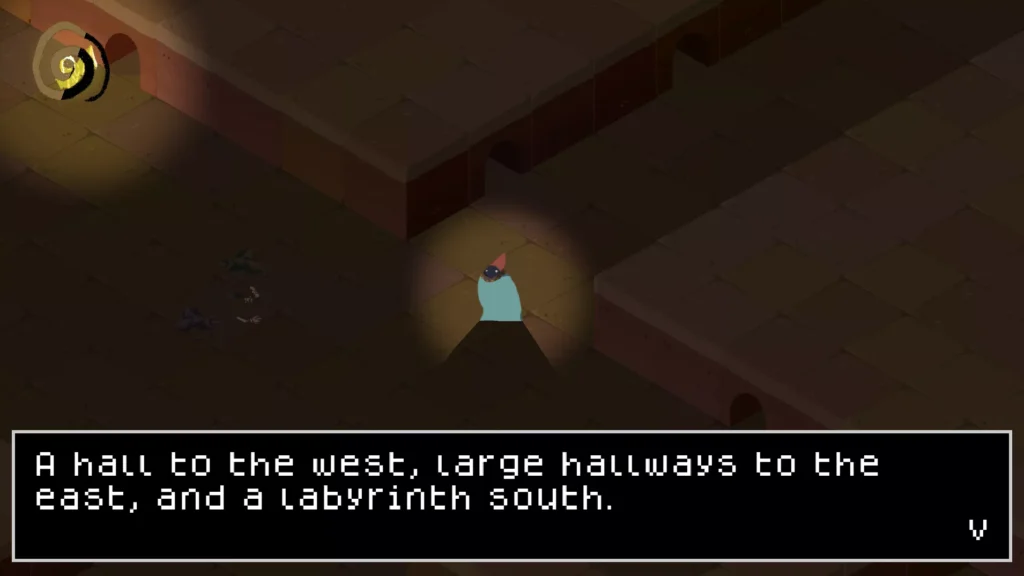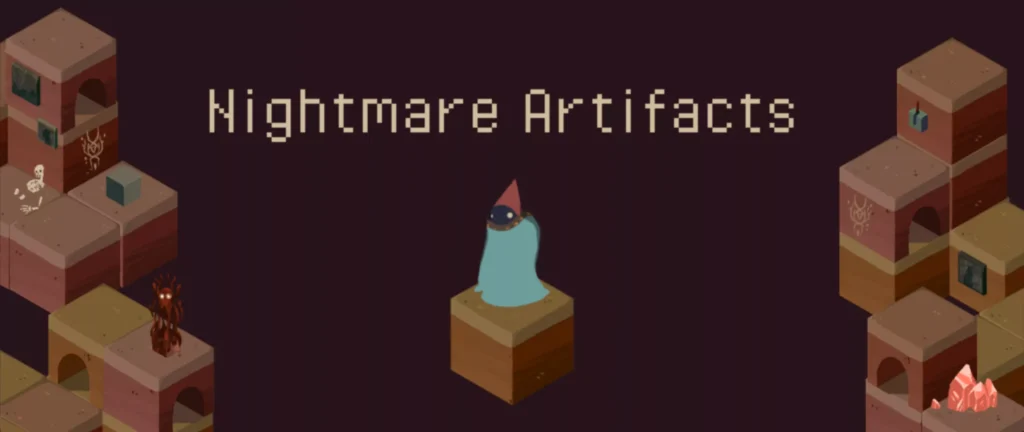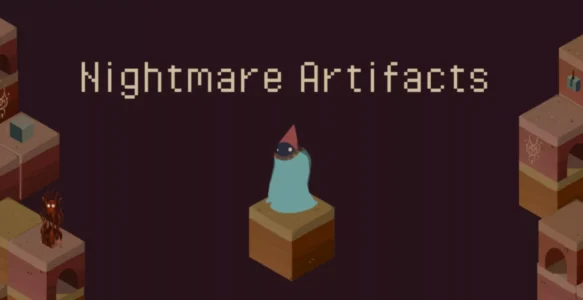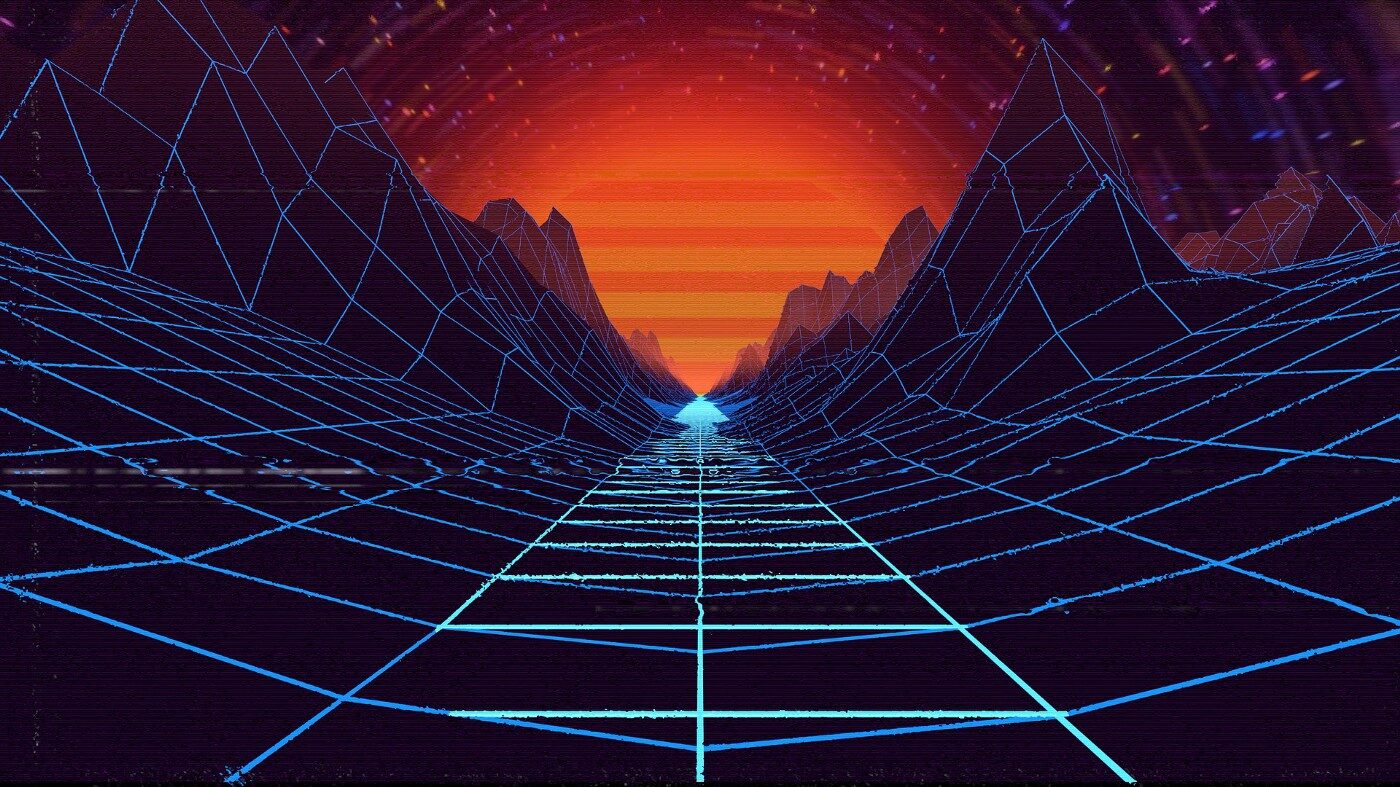After finishing Broken Dawn, a project that allowed me to explore themes of loss and acceptance, I felt a pull toward a darker, more introspective journey. Nightmare Artifacts was that call, an invitation to confront the shadows we all bury within ourselves, and another attempt at one of my absolute favourite genres – horror.
This was my second attempt at creating a game as a game designer, writer, and programming lead all at once, and a huge chance to build on the successes of Broken Dawn to perfect my technique as a developer. The game was developed as part of the Scream Jam 2024 with much of the same team behind Broken Dawn, with the sole exception of a replacement co-programmer, as Andy was busy with other projects this time.
Here’s an overview of Nightmare Artifacts, including details of the development journey and the priceless lessons I learned as this project unfolded.

Can you hear the voices too?
About Nightmare Artifacts
Set in the depths of an ancient catacomb, Nightmare Artifacts threads the line between survival horror and psychological exploration, following a protagonist whose past mistakes haunt him as he struggles to find answers—and perhaps redemption.
The protagonist, a once-respected Mayor of an unspecified future civilisation, descends into the catacombs to confront his own past. Years before, he ignored the warnings of a coming flood and led his townspeople into the very catacombs where he now stands, believing it would save them. But he unwittingly sealed their fate, dooming them to drown. The weight of this catastrophe has haunted him for years, gnawing at him in the dark, until the day he finally returns to confront the truths he has hidden from himself. Now, haunted by memories and guided by an otherworldly force, he must piece together what happened that fateful day.
As players traverse the two dimensions – one rooted in reality and the other in the surreal landscapes of a corrupted museum – this story is suggested, rather than told. In a potential full version of the game, the story could be explored further, with more narrative devices to help tell the story of the Mayor.





Game concept
Contrary to the Brackeys Game Jam 2024.2 that inspired Broken Dawn, the Scream Jam 2024 had an intentionally free theme. That meant that submissions had to loosely fit within the realm of horror, but there were no imposed creative directions for projects to follow.
This certainly gave us room to experiment within the horror genre. For me, however, the open-ended nature of the jam was a double-edged sword. On one hand, it allowed my team and me the creative freedom to delve into ideas of memory and trauma; on the other, it presented challenges in keeping the narrative focused and cohesive, and in channelling our creative energies.
In the end, we landed on a concept that was somewhat rooted in reality, inspired by the 2024 floods in the United States and around the world. Our core design idea, however, stemmed from the ‘dimensional shift‘ mechanic – a gameplay feature allowing players to switch between two overlapping realities. The original idea was to allow players to solve a series of environmental puzzles by exploiting the two dimensions. While some of that was retained, the dimensional shift mostly remained an interesting concept, to potentially expand upon in a more complex future game.

Core mechanics
Unlike Broken Dawn, which had a simpler gameplay loop, Nightmare Artifacts pushed us to develop more intricate mechanics. My experience with Broken Dawn gave me the confidence to experiment with more complex systems, and the proficiency to create basic elements much faster, enabling us to set up a comprehensive structure within days.
Thanks to this, I was able to work with my new co-lead programmer, Evin, on a series of more advanced mechanics than Broken Dawn ever allowed for:
- A more complex state machine: we implemented a complex state machine to handle the many transitions between the protagonist’s states—whether he’s navigating the catacombs, switching dimensions, or dealing with sanity hazards. The state machine was set up in a much more scalable way from the start compared to Broken Dawn, creating the perfect conditions to handle states across the game
- Puzzle manager: with Evin being a puzzle genius, we experimented with some puzzle mechanics to represent the mental challenges the protagonist must overcome to reconcile with his past. We employed switches, levers and buttons in conjunction with a Puzzle Manager that dynamically controlled its various children, giving us the flexibility to create some narratively coherent puzzles
- Sanity Drain: we implemented a Sanity meter, which drains over time when the protagonist walks through the museum dimension, adding tension and time management as an extra challenge for the players
- Sanity Hazards: we created a series of monsters in the labyrinth that would drain sanity much faster when approached. Placing rewards (like buttons) near these monsters gave players a chance and a reason to take more risks
- 2D lighting systems and isometric tiles: with Nightmare Artifacts being a horror game, the visuals and the atmosphere played a key role in creating a cohesive and interesting experience. I experimented for the first time with 2D lights to create unsettling environments and visuals, together with the incredible tileset that nina developed for the occasion
Some other mechanics and systems were borrowed straight from Broken Dawn, including the textbox system handled by an instance of the primary state machine, and refined to be scalable and efficient across the entire game.

Project management: the Notion hub
One of the most valuable takeaways from Broken Dawn was the use of a well-organised project management system. For this project, we leaned even more heavily on a centralised Notion hub, refining it to keep everyone on the same page and streamline collaboration.
Our Notion hub became the project’s backbone, a place where the team could track progress, log ideas, and store assets. Building on Broken Dawn’s structure, I organised this hub with the same key features and sub-pages, proving the efficacy of the previous system and how adaptable it can be to most development needs. Having seen its value first-hand, I’m planning to package the game development hub into a Notion template and make it publicly available soon.
With this Notion setup, I could ensure that every team member had access to the tools and information they needed without the friction of scattered files or miscommunication. It’s a system that streamlined our workflow and kept the project’s vision clear—even as we navigated its more challenging aspects.
What I learned from Nightmare Artifacts
Working on Nightmare Artifacts wasn’t just a journey in game design – it was an invaluable learning experience in team management and collaboration. Coming off the successes of Broken Dawn, I entered this project with high ambitions, but I quickly realised that working with a team on a larger, more demanding project came with unique challenges.
One of the biggest lessons Nightmare Artifacts taught me was the importance of truly collaborative leadership. In my eagerness to get things moving, I sometimes stepped on others’ toes, taking on tasks that team members may have wanted to own. Of that, I am deeply and sincerely sorry. It became clear that my excitement, while well-intentioned, was sometimes overwhelming, unintentionally stifling the creative contributions of others. Learning to slow down, listen, and create space for each team member’s input is still something I’m learning to do every day, and I’ll carry this learning into every future project.

This project also had its fair share of deadline-induced stress, and at one point, I found myself channeling that pressure onto the team without realising it. A few late nights and intense work sessions left everyone feeling stretched, and it became apparent that I needed to address the way I managed that stress. From this experience, I learned the importance of pacing and creating realistic timelines, not only for the project’s success but for the team’s well-being. Projects should be a source of inspiration, not burnout, and this is a value I’m committed to upholding.
I also learned that I don’t do well with mid-week deadlines. Broken Dawn worked incredibly well for my office worker’s schedule, because the deadline was on a Sunday – giving me the whole weekend to refine and panic-tweak the game if I needed to. With Nightmare Artifacts‘ deadline being on a Wednesday, I ended up feeling the passing of time even more, which undoubtedly led to the deadline-induced stress I mentioned above. For this reason, I’m unlikely to join another jam that doesn’t end on a weekend.
But perhaps the most valuable lesson I learned was the art of delegation. In the past, I’ve often been hands-on with every detail, but Nightmare Artifacts showed me the importance of giving others the space to contribute their ideas and skills. It’s an approach I intend to carry forward, knowing that collaboration strengthens not only the game itself, but the team behind it.
An eye to the future
Looking back, Nightmare Artifacts represents both a creative and personal milestone. It’s a game that took me deeper into the themes of trauma and memory, challenging me to balance a complex narrative with intricate mechanics. Ironically for a game about hubris and overconfidence, it also taught me the dangers of neglecting teamwork, and the kind of leader I want to become.
If Broken Dawn was a journey into acceptance of an important loss in my life, Nightmare Artifacts was an exploration of confrontation—a chance to face past mistakes, both within the game’s narrative and within my own approach to development. As I move forward, I’m eager to continue applying these lessons to create games that challenge, inspire, and invite players to reflect on their own journeys.
For now, this project stands as a testament to the strength of a shared creative vision, the power of immersive storytelling, and the value of learning from every step along the way.
Download the game: Nightmare Artifacts

Credits
Nightmare Artifacts was created by a small team of 4 passionate and talented devs in a week, as part of the Scream Jam 2024.
| Anthony L. Wolf | Game Design, Story, Programming Lead |
| Evin Oxley | Programming Co-Lead, Puzzle Design |
| nina nomori | Art, Characters, Tilesets |
| Matthew Estrada | Composer, SFX |



